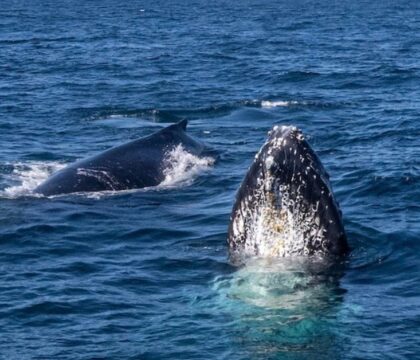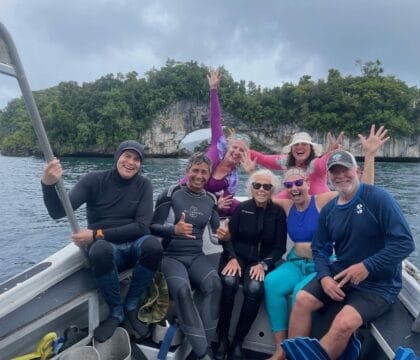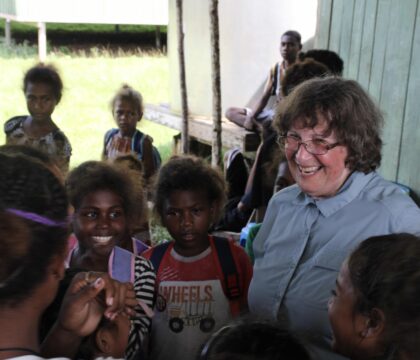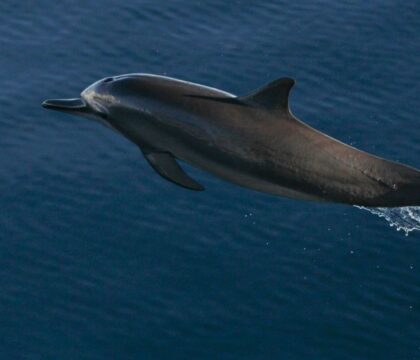March 19, 2016 • Travel Ideas
As we drove out of Dakar at the start of our Senegal expedition, in the cool air of early dawn in the Sahel, I was thinking about how excited I was to spend 12 days showing our group the wildlife and beauty of Senegal, my adopted country that I call home. We started the trip by introducing our travelers to our work with African turtles and manatees, including a visit to the African Chelonian Institute, a captive breeding facility for endangered African tortoises near Saly, Senegal.
We also spent a day at Bandia Reserve and saw Derby’s eland and Roan antelope (Senegal endemics), giraffes, white rhinos, 2 species of monkeys (Patas and Callithrix), Nile crocodiles, and bird species including ostriches, Abyssinian Rollers, African Wattled and Black-headed Lapwings.
On the second day, as we ate dinner at our favorite local French restaurant, someone in our group said this should be considered a wildlife and culinary tour of Senegal, because the food was so delicious! As a former French colony, there’s still a lot of French influence in the food here, so meals varied from French cuisine (croissants for breakfast to sole meuniere for dinner) to traditional Senegalese meals of fish, vegetables and rice with savory sauces, to American picnic lunches of sandwiches, sodas, chips, and cookies.
One trip highlight was that everyone was able to participate in our work by releasing head-started baby turtles to the wild at our study site, Tocc Tocc Community Natural Reserve at Lake Guiers. Rangers from, the local villages talked to us about their work and we boated around the protected area. While there we also saw lots of water birds: Jacanas, Eurasian Avocets, Black-winged Stilts, African Crakes, and Squacco Herons, and many others.
Djoudj National Park in northern Senegal is one of the most important bird sanctuaries in the world, and the sheer numbers of European migrants and endemic birds is overwhelming. During our day in the park we saw thousands of White-faced Whistling Ducks, flamingoes and white pelicans. We also saw three groups of Black-crowned cranes, thought to be one of the most endangered cranes in the world, and we were treated to two sightings of African Golden Wolves (previously thought to be jackals, these are a newly described species).
After taking an overnight ferry to southern Senegal and cruising up the Casamance River amid groups of leaping Bottlenose dolphins, we took a smaller boat out among the mangroves to see wildlife at closer range. At Point St. George on the Casamance River we spent two days watching African manatees from an observation tower as they came to drink from a freshwater spring at the edge of the river. This is really the best place in Africa to see the elusive manatees and we had at least 12 visit in one of morning, which is astounding because they generally are very shy and hard to find in Africa’s muddy waters. We were really lucky, the manatees we saw put on quite a show, with noses, backs and tails coming out of the water as they dove around the spring.
Also at Pt. St. George we enjoyed watching Epaulleted fruit bats as they rested during the day in a large Tamarind tree, and we checked out a tree full of wild orchids.
In between wildlife sightings we toured historic Goree Island and the infamous “Slave House” from which millions of slaves were sent to the New World, and we shopped for traditional baskets at a market in northern Senegal. One member of our group was very interested in traditional weaving and cloth-making, so we made stops at a workshop of traditional Mandjak weavers in St. Louis, and a batik workshop in Ziguinchor, Casamance.
On the last day we explored the Iles de Madeleine, a group of basalt islands off the coast of Dakar, and home to many breeding seabirds. It’s the only place in Senegal to see the red-billed Tropicbird, and we were able to see them both on the nest as well as gliding on ocean breezes along the island’s cliffs.
Other wildlife sighted during the 12 day trip included over Scimitar-horned Oryx, Addax, Egyptian mongoose, Senegal parrots, and Grey and Red-billed Hornbills, and African white-backed and white-headed vultures.
Tomas and I want to thank our amazing group of travelers—Andy, Paula, Cheryl, and Sarah—for supporting Oceanic Society and joining us on this first trip around Senegal. We feel we’ve made some new friends for life, and we look forward to sharing our wonderful country with more people next year!




